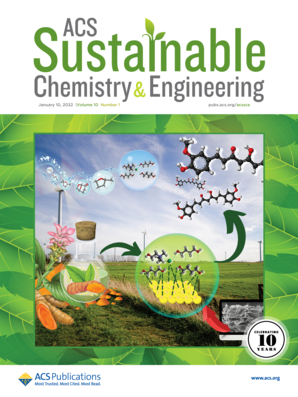Environmental Sustainability Strategy of Active Pharmaceutical Ingredient Manufacturing: A Perspective from the American Chemical Society Green Chemistry Institute Pharmaceutical Roundtable
IF 7.1
1区 化学
Q1 CHEMISTRY, MULTIDISCIPLINARY
引用次数: 0
Abstract
The pharmaceutical industry plays a crucial role in advancing global sustainability objectives related to good health and well-being. In alignment with international initiatives, including the United Nations’ Race to Zero campaign and the Paris Agreement, companies are committing to environmental stewardship. The industry has adopted green chemistry (GC) principles in the production of life-saving medications, ensuring that manufacturing processes are both commercially viable and have minimal environmental impact. As such, GC emerges as a critical component of these initiatives, providing environmental and economic benefits by minimizing waste, increasing process efficiency, and reducing operational costs. Recent innovations in greener synthetic methods exemplify the practical advantages of GC in pharmaceutical manufacturing. However, the sector continues to confront challenges, particularly concerning Scope 3 emissions within the supply chain, necessitating a comprehensive approach to sustainability. The implementation of GC not only reduces environmental impacts, including waste production and water consumption, but also improves financial performance and corporate reputation. As investor interest in environmental, social, and governance (ESG) factors continue to increase, pharmaceutical companies are increasingly acknowledging the economic benefits associated with sustainable practices. This paper explores current strategies for integrating GC into active pharmaceutical ingredient manufacturing, highlighting both achievements and obstacles. It underscores the urgent need for improved communication regarding the business value of GC and the integration of environmental metrics into manufacturing practices, especially amid a shifting regulatory landscape.原料药生产的环境可持续性战略:来自美国化学会绿色化学研究所药物圆桌会议的视角
制药业在推进与良好健康和福祉有关的全球可持续性目标方面发挥着至关重要的作用。为配合国际倡议,包括联合国的“力争零排放”运动和《巴黎协定》,企业正致力于环境管理。该行业在生产救生药物时采用了绿色化学(GC)原则,确保生产过程在商业上可行且对环境的影响最小。因此,GC作为这些活动的关键组成部分出现,通过最小化浪费、提高流程效率和降低操作成本来提供环境和经济效益。最近在绿色合成方法方面的创新体现了气相色谱在制药制造中的实际优势。然而,该行业继续面临挑战,特别是在供应链中的范围3排放方面,需要采取全面的可持续发展方法。实施GC不仅可以减少对环境的影响,包括废物的产生和水的消耗,还可以改善财务表现和企业声誉。随着投资者对环境、社会和治理(ESG)因素的兴趣不断增加,制药公司越来越认识到与可持续实践相关的经济效益。本文探讨了目前将气相色谱整合到活性药物成分制造中的策略,突出了成就和障碍。它强调了迫切需要改进关于GC的业务价值和将环境指标集成到制造实践中的沟通,特别是在不断变化的监管环境中。
本文章由计算机程序翻译,如有差异,请以英文原文为准。
求助全文
约1分钟内获得全文
求助全文
来源期刊

ACS Sustainable Chemistry & Engineering
CHEMISTRY, MULTIDISCIPLINARY-ENGINEERING, CHEMICAL
CiteScore
13.80
自引率
4.80%
发文量
1470
审稿时长
1.7 months
期刊介绍:
ACS Sustainable Chemistry & Engineering is a prestigious weekly peer-reviewed scientific journal published by the American Chemical Society. Dedicated to advancing the principles of green chemistry and green engineering, it covers a wide array of research topics including green chemistry, green engineering, biomass, alternative energy, and life cycle assessment.
The journal welcomes submissions in various formats, including Letters, Articles, Features, and Perspectives (Reviews), that address the challenges of sustainability in the chemical enterprise and contribute to the advancement of sustainable practices. Join us in shaping the future of sustainable chemistry and engineering.
 求助内容:
求助内容: 应助结果提醒方式:
应助结果提醒方式:


